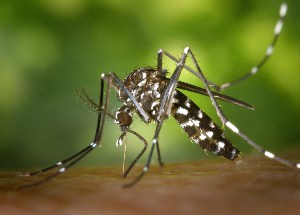There are many insects and bugs that look like mosquitoes. If you find them in your home, do not try to exterminate them immediately. Some species do not carry diseases or infections.
Generally, they are safe, though may cause only a little discomfort. I have prepared an overview of the most common insects that look like mosquitoes. You may have already encountered some of these bugs inside or around your home.
Guide on Insects That Look Like Mosquitoes
People don’t like mosquitoes because they bite painfully, carry infections, and leave painful red bite spots. If there are pets in your house, some mosquitoes can be dangerous to them as well.
However, there are many mosquito-like insects in nature, which often causes people to confuse them. These insects can resemble mosquitoes without being dangerous. Some bugs are even beneficial, so you shouldn’t destroy them.
Midges vs mosquitoes
As outside temperatures rise, many flying insects appear. People start thinking about the ways to cope with them, either with the help of the disinfection service or by themselves. Comparing midges vs mosquito, I should note they are very similar to each other.
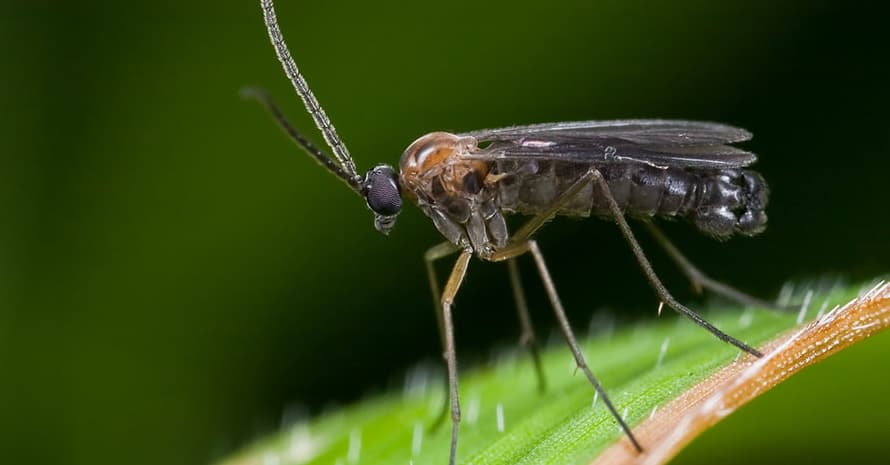
However, midges are 1.5 to 2 times smaller than mosquitoes, though their bodies are thicker. Also, their body color is dark brown in contrast to the lighter shade of mosquitoes.
Midges inhabit the same regions as mosquitoes. However, having no trunk with a needle, they can not bite people or animals. Accordingly, they do not carry any diseases and are harmless to us.
You can identify midges by another distinctive feature. These insects fly in large flocks, while mosquitoes can fly one at a time.
If you see many insects in one swarm, these are harmless gnats. These creatures can be really annoying because they get in your mouth, ears, and eyes, but they are not dangerous.

Crane flies vs mosquitoes
Crane flies are other insects that resemble mosquitoes in appearance. They have an elongated dark-colored body with a proboscis.
There is a common misconception that crane flies belong to the mosquito species or even feed on them, but this is not true. In fact, crane flies resemble mosquitoes only outwardly, but they are not dangerous to humans and animals.
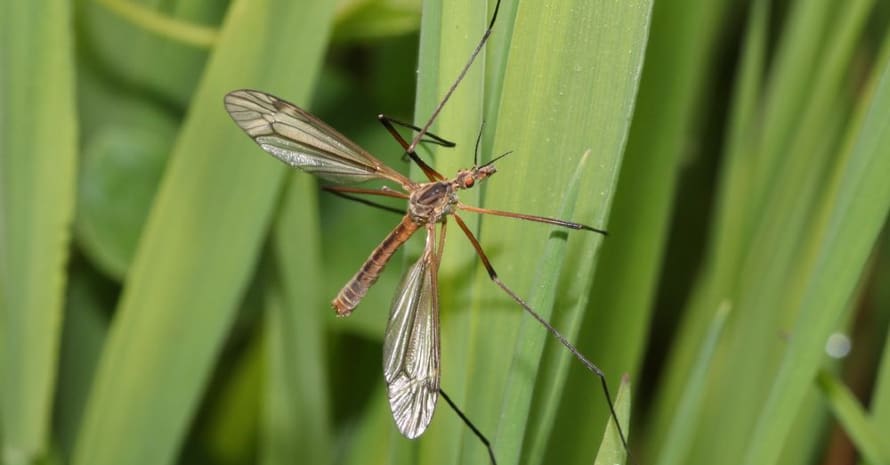
Comparing crane flies vs mosquitoes, there are only two major similarities:
- These insects are outwardly similar to each other.
- They live in humid regions and are active with the onset of heat.
Crane flies do not sting or attack humans. They do not eat at all during the adult stage. They consume only plant food during the larval stage, after which they live a few days without food and die.
You don’t need to spend money on destroying them, as crane flies live very little and will soon become extinct on their own.
Gnats vs mosquitoes
Many people tend to confuse a gnat vs mosquito as these two species are very similar to each other from a distance. However, they have significant differences that you need to know about.
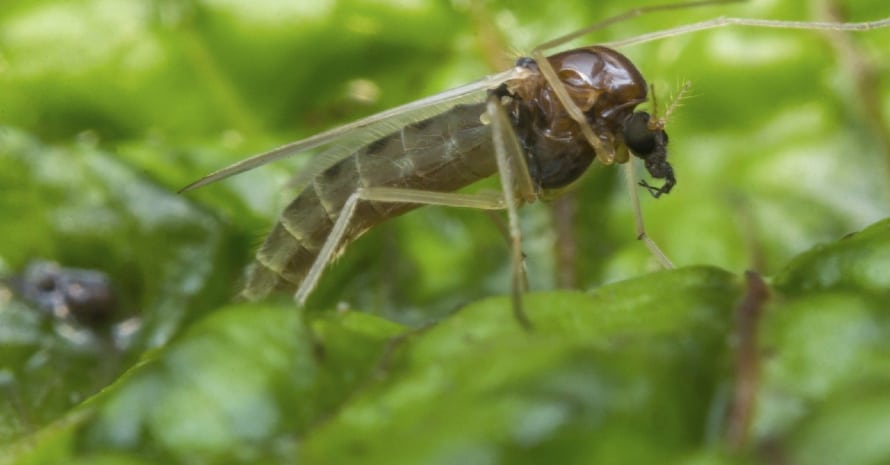
The main difference lies in their food behavior. Gnats feed mainly on plant nectar. They do not consume human or animal blood. Gnats also can stay on any surface and do not raise their tail.
Their body is always parallel to the surface. Accordingly, they neither sting a person nor leave painful marks in the form of pimples and redness.
You can also distinguish gnats by their shrunken body. These insects are smaller than adult mosquitoes. They look more like bed bugs if you have encountered them.
Mayflies vs mosquitoes
Another insect, which you may confuse with a mosquito, is a mayfly. Though many mosquitoes look like mayflies, there are some peculiarities in their appearance and behavior.
You can always differentiate between the appearance of mayfly vs mosquito. Mayflies have a body similar to a dragonfly. It is elongated and thickened, with wings and legs.
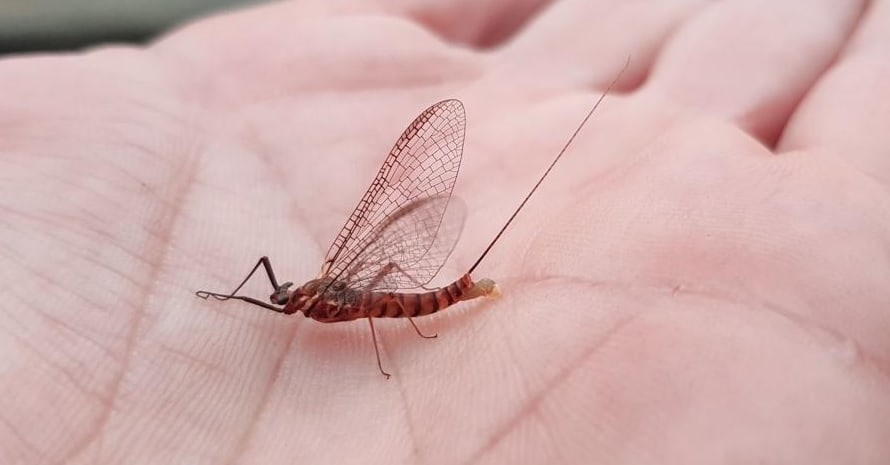
This species becomes more active when the air temperature rises, and the air becomes more moist. Most often, mayflies can be found near freshwater sources, such as ponds and lakes.
Their peculiarity is that they live only 1-2 days. As they have no need to eat as adults, they don’t attack humans or animals, nor do they consume blood. Mayflies fly in swarms, which makes them look like gnats rather than mosquitoes.
Before feeling irritated when you see a swarm of mayflies nearby, you should know that these insects play an important role in the natural ecosystem. Therefore, it is better to leave them on their own and not to destroy them.
Also read: Best Mosquito Sprays for Yard
FAQ About Mosquito-Like Bugs
Have you ever encountered a situation when you saw a mosquito-looking bug and didn’t know what to do about it? These answers to the common questions about mosquitoes and mosquito-looking insects can help you not to be confused in these situations.
What are the big bugs that look like mosquitoes?
There are several insects similar to mosquitoes:
- Midges (Chironomidae);
- Dixid midges (Dixidae);
- Winter crane flies (Trichoceridae);
- Wood gnats (Anisopodidae);
- Mayflies (Ephemeroptera);
- Crane flies (Tipulidae).
Indeed, some insects resemble mosquitoes, but they belong to different species. Thus they differ in appearance, behavior, and diet. Many mosquito-like insects do not bite people and animals, as they do not have a stinger. To spot the differences, you need to look closely at their body color, size, and behavior.
Note that all of the insects above do not belong to the mosquito species, although they are similar in appearance.
What does a baby mosquito look like?
Everyone knows what adult flying mosquitoes look like. But knowing the appearance of baby mosquitoes can help you recognize the threat of mosquito larvae on your property on time.
Mosquito larvae look like tiny light-colored worms without wings and stings. They hatch in water sources, so mosquitoes are most often found in wet areas near lakes, swamps, rivers, reservoirs, or after heavy rainfall.
Mosquito larvae grow only in standing water. After some time, adult mosquitoes hatch from the larvae as we see them with their wings and a sting.
Also read: Most Effective Mosquito Killers
How many wings does a mosquito have?
Mosquitoes have only two wings. If you see a mosquito-like insect with four wings, this is not a mosquito. In addition to two wings, mosquitoes have two pairs of legs at the back and one pair of legs at the front. They are oriented in space by means of two antennae located near the sting.
The tendrils of insects are very sensitive to their environment, and they use them to fly, maneuver around obstacles, and determine where to land. If you tear off one or both wings of a mosquito, it will not be able to fly and will die.
Mosquito-Looking Bugs: No More Confusion
Many species of insects look similar to mosquitoes, but you will immediately notice the difference from a close distance. You need to learn to distinguish between mosquitoes and other bugs to know whether there is any danger to you, your family, and pets.
If you come across the insects described in the guide above, it is better not to try to kill them with expensive methods and substances.
Many insects that are similar to mosquitoes do not live more than 1-2 days, and they will eventually die on their own. In addition, some insects are very important for the ecosystem and the growth of some plants.
Have you already confused gnats, crane flies, or mayflies with mosquitoes? How have you dealt with them? Tell us about your experience in the comments.
Also read:
- How to Kill a Mosquito in Your Room
- How to Kill Mosquito Larvae
- Are Mosquitoes Attracted to Light
- What Eats Mosquitoes
- When Are Mosquitoes Most Active
References:
- Controlling Mosquitoes (by Emily Zobel and Jon Traunfeld, University of Maryland Extension):
https://extension.umd.edu/hgic/topics/controlling-mosquitoes - Beneficial Insects (Oregon State University and the U.S. Environmental Protection Agency):
http://npic.orst.edu/envir/beneficial/index.html - Ephemeroptera (UC Museum of Paleontology):
https://ucmp.berkeley.edu/arthropoda/uniramia/ephemeroptera.html

